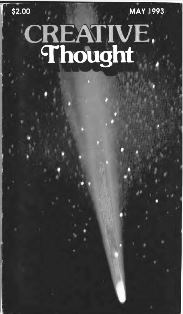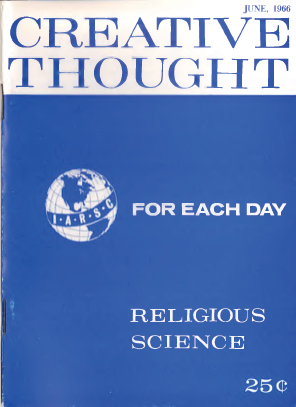Scientists don’t usually have a reputation for being very creative. They have to adhere to the scientific method, use statistics and data, and carefully measure their results—activities that would appear to take the magic out of the creative process, like having to explain your own joke. But few would dispute that the great scientific and technological innovators were creative thinkers.
- NSTC Committee on Technology Charter (pdf) Chair: Thomas Kalil, Office of Science and Technology Policy Executive Secretary: Randy Paris, Office of Science and Technology Policy Organizational Members: Department of Agriculture Department of Defense Directorate for Defense Research and Engineering Department of Commerce Department of Energy De.
- College of arts science and technology: The project topic home for MBA, MSC, BSC, PGD, PHD final year student: Browse and read free research project topics and materials. Hire a project writer.
Science and technology is an interdisciplinary topic encompassing science, technology, and their interactions Subcategories. This category has the following 11 subcategories, out of 11 total. Creative Commons has formed a new Science Advisory Board (SAB) to guide its science program and to provide overall strategic vision and focus. The SAB brings legal, institutional as well as domain-specific knowledge in the use and sharing of scientific tools and data.
'The greatest scientists are artists as well,' as Albert Einstein said.
“I think we take for granted that we rely heavily on science creativity, whether we realize it or not,” said Rex Jung, a professor of neurosurgery at the University of New Mexico in Albuquerque. Whether we use our advanced technology to watch cat videos or take advantage of life-saving medical procedures, scientific innovation is “incredibly important to our quality of life,” Jung said.
Society needs creative scientists for continued innovation. But does the process for teaching scientific creativity differ from artistic creativity? And can creativity be taught?


Scientists have a bad creative rap, Jung said, because their work is more tangible and “real.”
“Our work builds on previous work—you’re standing on the shoulders of giants,” he said. “We’re incrementally working to expand upon previous work, and that is deemed less creative, or somehow derivative. But I would argue that artists do the same thing.” Cubist artists built upon the foundation of impressionism, Jung noted, just as scientists innovate based on the work conducted before their own.*
Recommended Reading
How to Teach American History in a Divided Country
Kristina RizgaWorking for Racial Justice as a White Teacher
Kristina RizgaWhat Teacher Friends Talk About When Students Aren’t Listening
Julie Beck
Recommended Reading
How to Teach American History in a Divided Country
Kristina RizgaWorking for Racial Justice as a White Teacher
Kristina RizgaWhat Teacher Friends Talk About When Students Aren’t Listening
Julie Beck
In 1926, social psychologist Graham Wallas wrote a book called “The Art of Thought” in which he described the four stages of creativity: preparation, incubation, illumination, and verification. Jung, who has written a number of articles about the neuroscience of creativity, noted that the stage between incubation and illumination involves a pretty big cognitive handoff.
When an idea is incubating, Jung says, you rely heavily on the neural connections your brain uses for brainstorming—a system known as the default-mode network: “You use the regions of the brain involved in daydreaming and imagination. You’re looking inward instead of solving the problems of the world.” That allows ideas to bounce around and intersect in novel ways.
But the cognitive control network takes over once your brain wants to articulate and implement the idea. This is your brain’s error checker, where you plan and make decisions to overcome your habitual inclinations.
Jung is most interested in that tenuous transfer between the two systems, when an idea evolves from something abstract to something it can articulate and evaluate.
“We see that the most highly creative people flip easily between the two and are better able to modulate these networks,” Jung said.
Neurologically, the creative process should look the same regardless of whether a person is an artist or a scientist, Jung says. And researchers have just begun to see this creativity in real time.
Charles Limb, an ear, nose and throat surgeon at Johns Hopkins University in Baltimore, scanned musicians’ brains as they improvised melodies. Limb did similar study with rap artists, asking them to improvise on the fly.**
What researchers found was that the improvising brains turned off their error checkers and let the ideas bubble to the surface while they were in earlier stages. If they studied scientists, researchers would presumably see the same neurological activity, although they haven’t yet tested it.
But Jung and others who study creativity fear that it’s on the decline among students. Even though creativity is innate, it needs to be cultivated. And as schools place greater emphasis on learning material and taking tests, Jung fears that opportunities for thoughts to flow freely are fewer now than in the past.
“I always advocate for recess,” Jung said. “This is where imagination often happens. That downtime is really important—kids had their time in class, so then they need time to think about something they learned in class or absorb the material in a different way by getting away from it for a period of time.”


In a blog post on his web site, Jung notes the value of what he calls “imaginability,” or the ability to play out ideas in one’s mind. This sort of exercise can only be done with the default-mode brain, Jung said, while the conscious mind is busy doing something else that’s not too taxing—like cooking or making sure your teeth are brushed.
“Most creative people stumble upon their tool to increase their imaginablity, whether it’s taking a bath or a walk or a drink of bourbon,” Jung said. They find some way to turn down the noise of the conscious mind so ideas can flow more naturally.
People may prefer to meditate, exercise, or just lay in bed all day, but they have to know themselves and how their minds work before tapping into their creativity systematically. And without the time to do this as children, learning how to do it later in life may be more difficult.
Some who foster creativity in scientists encourage students to learn these facts earlier in their scientific careers. Ted Clark, a professor of chemistry at Ohio State University in Columbus, has been working for years to enhance creativity in his first- and second-year students.
Students like to do research, Clark said, but most universities require at least a few years of science education before students can really get into the lab. So Clark and his colleagues created curriculum for basic science courses that involves a hands-on research component to get students more engaged.
Science And Technology The Creative Archive Projects
During an entry-level chemistry course, Clark charges his students with collecting water or soil samples as part of a larger project to determine the contaminants that may be present around the city of Columbus. This kind of flexible project allows students to incorporate knowledge from other fields like architecture or history, Clark said, to figure out why a particular area might be contaminated. Clark has also been working with a number of high schools throughout Ohio to integrate creative problem solving into science classes.
Efforts to cultivate and understand the neurological processes of creativity may mean a more creative generation of scientists with stunning innovations yet to come. But to do that, they have to have the space and time to understand their own minds.
Science And Technology The Creative Archive Books
To solve a problem in science, Clark said, scientists have to think logically and linearly.
Science And Technology The Creative Archives
“But scientists aren’t robots. You can’t just take your data and put it in something and have the answer come out,” he said. “That’s my top priority: How can we have some opportunities for [students to work on] authentic problems where we welcome diverse solutions? In science, we don’t begin by knowing the answer—we value the process.”
Science And Technology The Creative Archive Articles
* This post originally indicated that cubism predates impressionism. We regret the error.
** This post originally stated that Rex Jung was involved in the study on rap musicians. We regret the error.